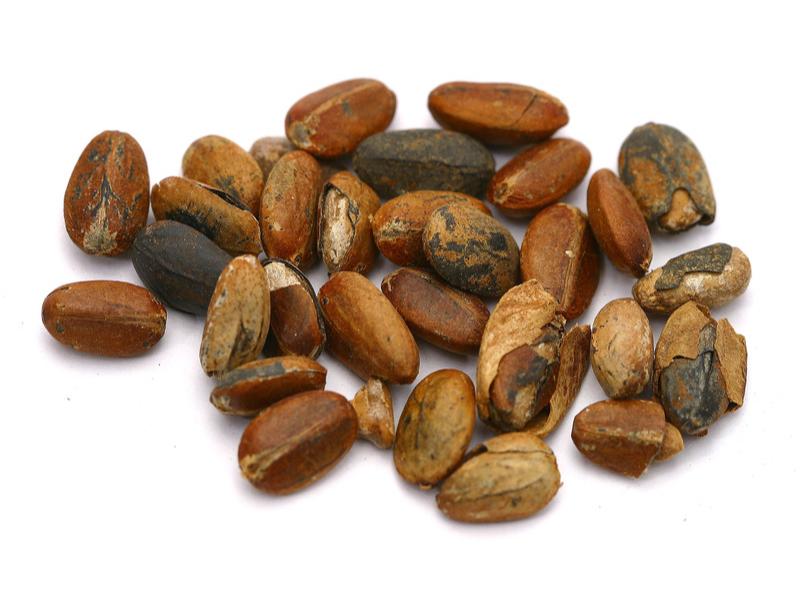Search in medicinals
Crotonis Fructus
Croton [fruit]
巴豆 〔巴豆〕 bā dòu

Alternate English names: tiglium [fruit]
Alternate Chinese names: 巴豆肉u bā dòu ròu
Kingdom: Plant
Origin in PRC Pharmacopoeia: Croton tiglium L. (PRC Pharmacopoeia)
Origin in unofficial sources: Croton tiglium L.*
Use: Medicinal
Category: Draining-precipitation agents / Offensive precipitant agents
Properties: Acrid; hot; highly toxic.
Channel entry: Stomach, large intestine, and lung channels.
Actions and indications:
- Drastically precipitates
cold accumulation : Acute patterns of constipation due tocold accumulation . - Expels water and reduces swelling: Drum distension (ascites).
- Dispels phlegm and disinhibits the throat: Cold repletion chest bind; throat impediment with phlegm obstruction.
- Additional uses: Bā dòu may be applied externally to welling-abscesses with pus that have not ruptured. It can also be used topically for skin diseases such as
scab , lichen, and malign sores. A malign sore is any sore that is burning hot, swollen, and itchy, continues to spread after bursting, and fails to heal. In this application, bā dòu is applied topically to hasten the ulceration of welling-abscesses and to consume malign flesh. An associated medicinal, 巴豆霜 bā dòu shuāng, is made from bā dòu by removing the skin and heart, crushing the seeds, boiling them repeatedly, and removing the oil by pressing the seeds between absorbent paper.
Dosage and method: Oral: 0.1–0.3gr, always used in pills and powders. It is usually made into a frost
(bā dòu shuāng (Crotonis Fructus Pulveratus)) to reduce its toxicity .
Warnings: Bā dòu is acrid, hot, dry, and highly toxic. It is contraindicated in the absence of
Product description: This seed is elliptical or ovate, and slightly flat. It is about 1–1.5 cm long, 6–9 mm in diameter, and 4–7 mm thick. The exterior surface is brown or dark brown and smooth, with a faint luster. The caruncle is at one end of the hilum, appearing as a small protuberance that easily breaks off. The chalaza is at the other end, joined to the hilum by a slightly protruding longitudinal raphe. The transverse section appears slightly squared. The seed coat is thin, and brittle can be easily peeled away to reveal the seed, which has a membranous silver white perisperm. The endosperm is thick, pale yellow, and oily. In the center are two thin cotyledons. The radicle is small, and points to the end where the caruncle is.
Quality: Large plump seeds with white endosperm are the best. Empty seeds or ones that have exuded oil and changed color are inferior.
Production area: Sìchuān, Guìzhōu.
Etymology: The name bā dòu 巴豆 means Sìchuān bean,
bā 巴 denoting Bā Shǔ 巴蜀, another name for Sìchuān, and dòu 豆 meaning bean.